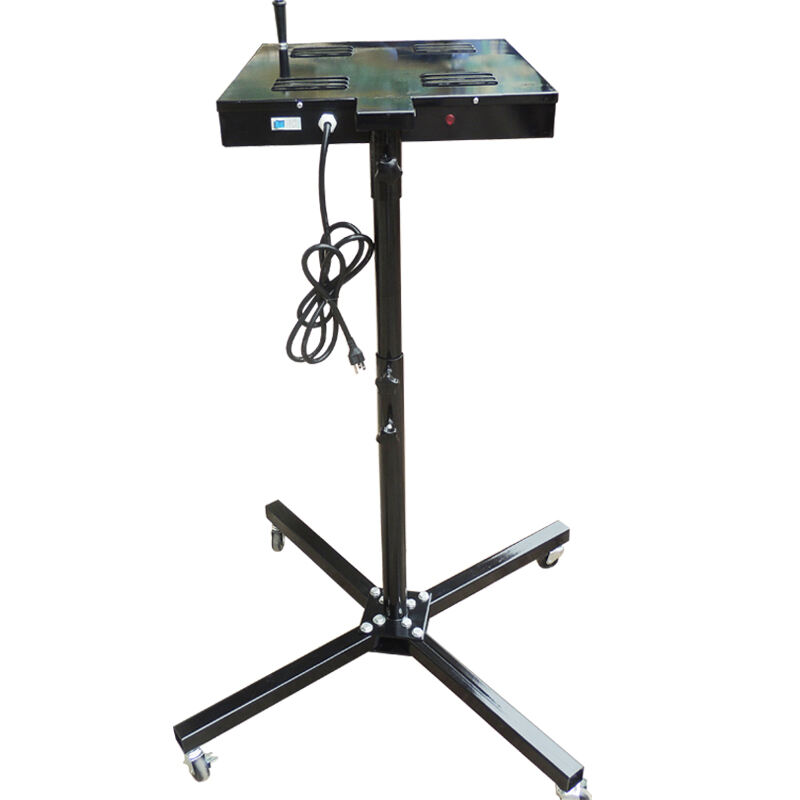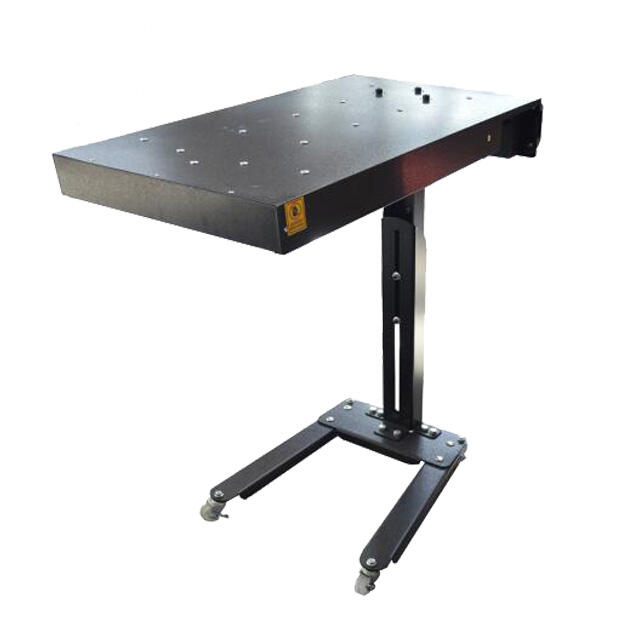Understanding Screen Printing Equipment Essentials
The world of t-shirt printing has evolved significantly over the years, bringing forth various technologies and equipment designed to deliver professional results. At the heart of this evolution lies the ongoing debate between flash dryer and heat press technologies. Both pieces of equipment serve crucial roles in the t-shirt printing process, yet they function differently and offer distinct advantages for specific applications.
For screen printing professionals and businesses, choosing between a flash dryer and a heat press isn't merely about preference – it's about understanding how each technology impacts production efficiency, print quality, and overall business success. This comprehensive guide will explore the intricacies of both technologies, helping you make an informed decision for your printing operations.
The Technology Behind Flash Dryers
Core Components and Functionality
A flash dryer represents a sophisticated piece of screen printing equipment that utilizes infrared heat to quickly cure ink between color applications. The system typically consists of a heating element, temperature controls, and an adjustable stand or mounting system. The heating element produces intense, focused heat that penetrates the ink layer without overheating the fabric beneath.
The technology employs short-wave infrared radiation that effectively cures ink in seconds, allowing for rapid production cycles. Modern flash dryer units often feature digital temperature controls, timing systems, and adjustable height mechanisms to accommodate different garment types and printing requirements.
Benefits in Multi-Color Printing
When it comes to multi-color designs, the flash dryer truly shines. It enables printers to partially cure each color layer before applying the next, preventing colors from mixing or smearing. This intermediate curing process, known as flash curing, is essential for maintaining color vibrancy and preventing bleeding between layers.
The precise heat control of a flash dryer ensures that each ink layer receives the exact amount of heat needed for proper curing, while minimizing the risk of scorching or damaging the fabric. This level of control is particularly valuable when working with complex designs requiring multiple color applications.

Heat Press Technology Explained
Operating Principles
Heat press machines operate on the principle of combining heat and pressure to transfer designs onto garments. Unlike a flash dryer that uses infrared radiation, heat presses rely on direct contact heat transfer. The system typically consists of upper and lower platens, with the upper platen containing the heating element and the lower providing a flat, stable surface.
Modern heat presses incorporate digital temperature controls, pressure adjustment mechanisms, and timing systems to ensure consistent results across multiple applications. The technology is particularly well-suited for heat transfer vinyl, sublimation printing, and other transfer-based decoration methods.
Versatility in Applications
Heat presses demonstrate remarkable versatility in handling various materials and transfer methods. They excel in applying heat transfer vinyl, sublimation transfers, and plastisol transfers. The consistent pressure and heat distribution ensure even adhesion across the entire design area, resulting in durable, professional-looking prints.
The technology also allows for precise temperature and time settings, making it possible to work with a wide range of materials beyond just t-shirts, including caps, bags, and other promotional items. This versatility makes heat presses a valuable tool for businesses offering diverse product lines.
Production Efficiency Comparison
Speed and Output Considerations
When comparing production efficiency, the flash dryer excels in high-volume screen printing operations. Its ability to quickly cure ink between color applications allows for faster production cycles, especially when printing multiple colors. A well-configured flash dryer can process hundreds of shirts per hour when integrated into an efficient production line.
Heat presses, while generally slower in terms of pure production speed, offer advantages in terms of consistency and ease of use. The process requires less technical expertise compared to screen printing with a flash dryer, making it more accessible for smaller operations or beginners in the industry.
Labor and Skill Requirements
Operating a flash dryer effectively requires significant technical knowledge and experience. Operators must understand proper temperature settings, curing times, and positioning for different ink types and fabric combinations. The learning curve can be steep, but the resulting efficiency in high-volume production often justifies the investment in training.
Heat presses generally require less technical expertise to operate effectively. The straightforward process of setting temperature, time, and pressure makes it easier to train new operators. However, this simplicity comes at the cost of slower production speeds compared to a well-operated flash dryer setup.
Cost Analysis and Investment Considerations
Initial Equipment Investment
The initial investment for a professional-grade flash dryer can vary significantly based on size, features, and capacity. While basic models are available at lower price points, commercial-grade units with advanced features represent a substantial investment. However, the durability and long-term production capabilities often justify the higher upfront cost for serious screen printing operations.
Heat presses typically require a lower initial investment, making them an attractive option for businesses starting out or those with limited capital. The range of available models allows businesses to choose equipment that matches their budget and production needs, with the option to upgrade as their business grows.
Operational Costs
Operating costs for flash dryers include electricity consumption, maintenance, and potential part replacements. While energy usage can be significant due to the high temperatures required, efficient modern units incorporate features to optimize power consumption. Regular maintenance is essential but generally straightforward, focusing on keeping heating elements clean and ensuring proper alignment.
Heat presses typically have lower operational costs, with primary expenses limited to electricity and occasional maintenance. The simpler mechanical design usually results in fewer repair needs, though regular calibration and maintenance of pressure systems may be necessary to maintain optimal performance.
Frequently Asked Questions
How long does it take to cure ink with a flash dryer?
Curing time with a flash dryer typically ranges from 3-8 seconds per color application, depending on factors such as ink type, fabric material, and temperature settings. Modern flash dryers with efficient heating elements can achieve proper curing in as little as 2-3 seconds for optimal production speed.
Can I use a heat press for all types of t-shirt printing?
While heat presses are versatile, they are best suited for heat transfer vinyl, sublimation, and transfer papers. They cannot replace a flash dryer for traditional screen printing applications where wet ink needs to be cured between color applications.
What maintenance does a flash dryer require?
Regular maintenance for a flash dryer includes cleaning the heating element, checking electrical connections, ensuring proper alignment, and calibrating temperature controls. It's recommended to perform basic maintenance weekly and comprehensive inspections monthly for optimal performance and longevity.

